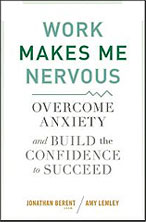Create your diagnostic Map: Quick Start
Creating Your “Map” for Change
If change is going to occur, you are going to need to develop a “map” for the process of change.. The following content will help parents of children with selective mutism formulate an understanding of the diagnostics and dynamics which impact the typical SM child; therefore, this content is crucial for your “map”.
As a starting point I suggest two very important actions:
- Review age appropriate developmental milestones and assess if your child is on par.
- Develop an understanding of SM as a variation of obsessive compulsive disorder rather than a “talking problem”. The obsessiveness refers to the child’s conscious or non-conscious worry and anxiety. The compulsion is the behavior of the verbal shutdown. Think of this as a “tic” of the mind.
There are different types of intelligence; intellectual, social, and emotional. While many SM children are intellectually intelligent, their social and emotional IQ is at risk. The more the selective mutism “profile” accrues, the more the child is at risk for a developmental disability, as many aspects of maturation are inhibited. In addition, the longer that SM behavior is present the more potential there is for an avoidant and dependent personality disorder to develop. If you want proof of this fact, please listen to the “adult selective mutism” interviews at our clinical library.
Common Behaviors of The Selective Mutism Syndrome
Identify which of the following apply to your child. Not all apply to every child, but you should see a pattern emerge
- The child speaks normally at home, but is verbally inhibited/mute in situations out of the home.
- Verbal shutdown in school is a major challenge.
- A propensity for temper tantrums-whining.
- Over-dependence on parents for problem solving.
- Over-dependence on parents for communication.
- Avoidance of age-appropriate “performance” responsibilities.
- Obsessive-compulsive characteristics.
- Excessive worry; especially in new social or interactive venues.
- Separation anxiety.
- Clingy (to parents) behavior.
- A reluctance (compulsion) to think or talk about thoughts and feelings.
- Social skills challenges.
- Social fear.
- “Detachment” or a disconnecting during interactive-social situations.
- Avoidance of eye contact during interactive scenarios.
- Avoidance of bathroom in school.
- Avoidance of eating in school.
-
Physical stiffness in interactive situations.
- Aggressive behavior toward siblings.
The silver lining with selective mutism, which can be considered an “addiction” to the avoidance of speaking and a social phobia , is that with productive early intervention the anxiety can be controlled before it works its’ way insidiously into the personality and lifestyle.
Self-Help and Treatment Options
- Free Audio CD from Social-Anxiety.com
- Social Anxiety: The Untold Story
- Beyond Shyness: How To Conquer Social Anxieties
- Work Makes Me Nervous
- Comprehensive Self-Therapy Audio Program
- Public Speaking Anxiety Self-Therapy Audio Program
- “Warm Hands Cool Face” A Self-Help Clinical Program for Blushing Anxiety & Erythrophobia
- The Berent Method: High Performance Therapy for Social-Anxiety
- Telephone/skype therapy available worldwide
- Selective Mutism Seminar Audio CD/MP3 Program
- Self-Help Program for Parents of Children with Selective Mutism
- The Sociability Questionnaire
- Tip of the Month Club
- Social Therapy and The Learning Disabled
- Free Parent Addiction Survey


